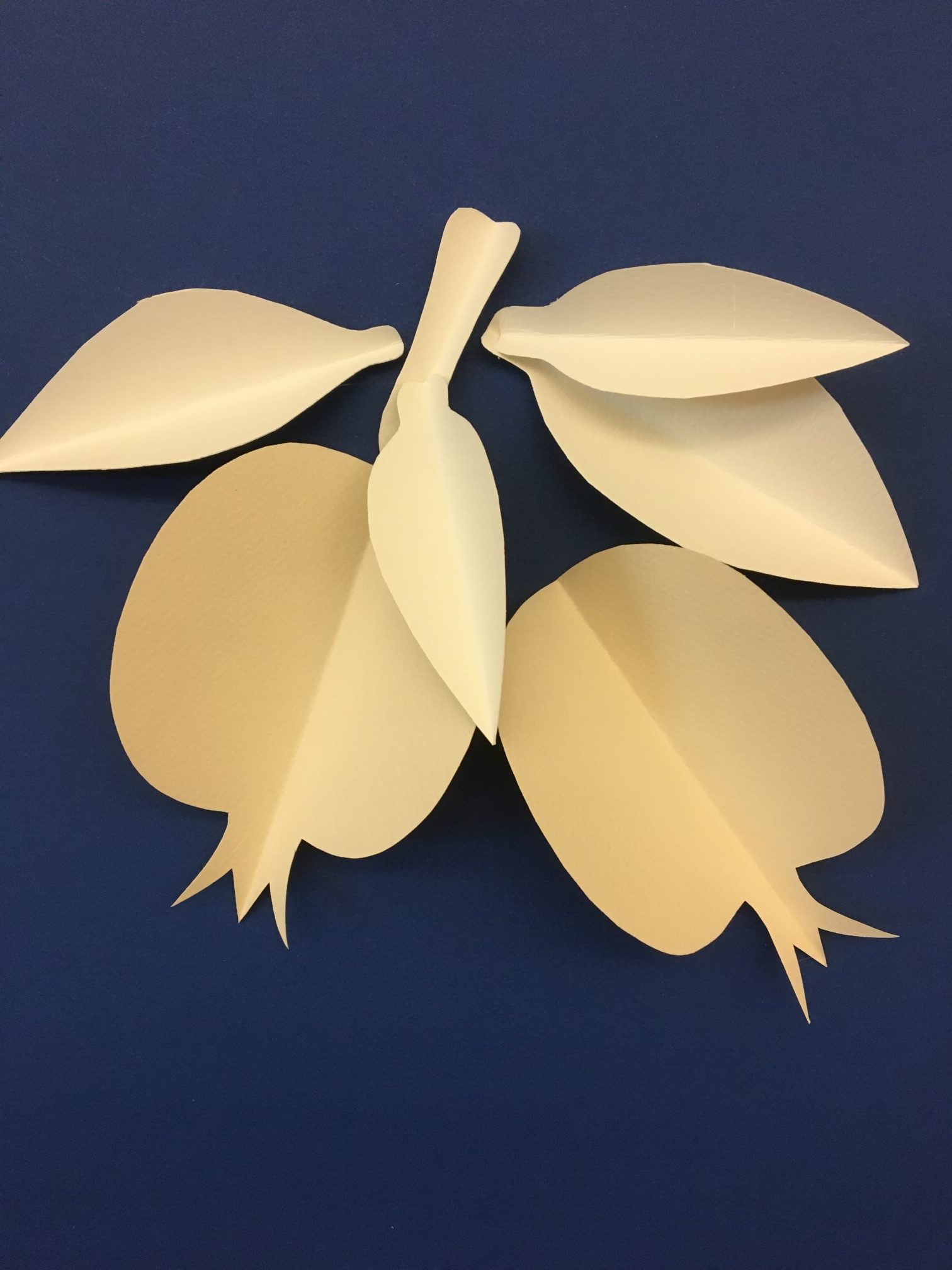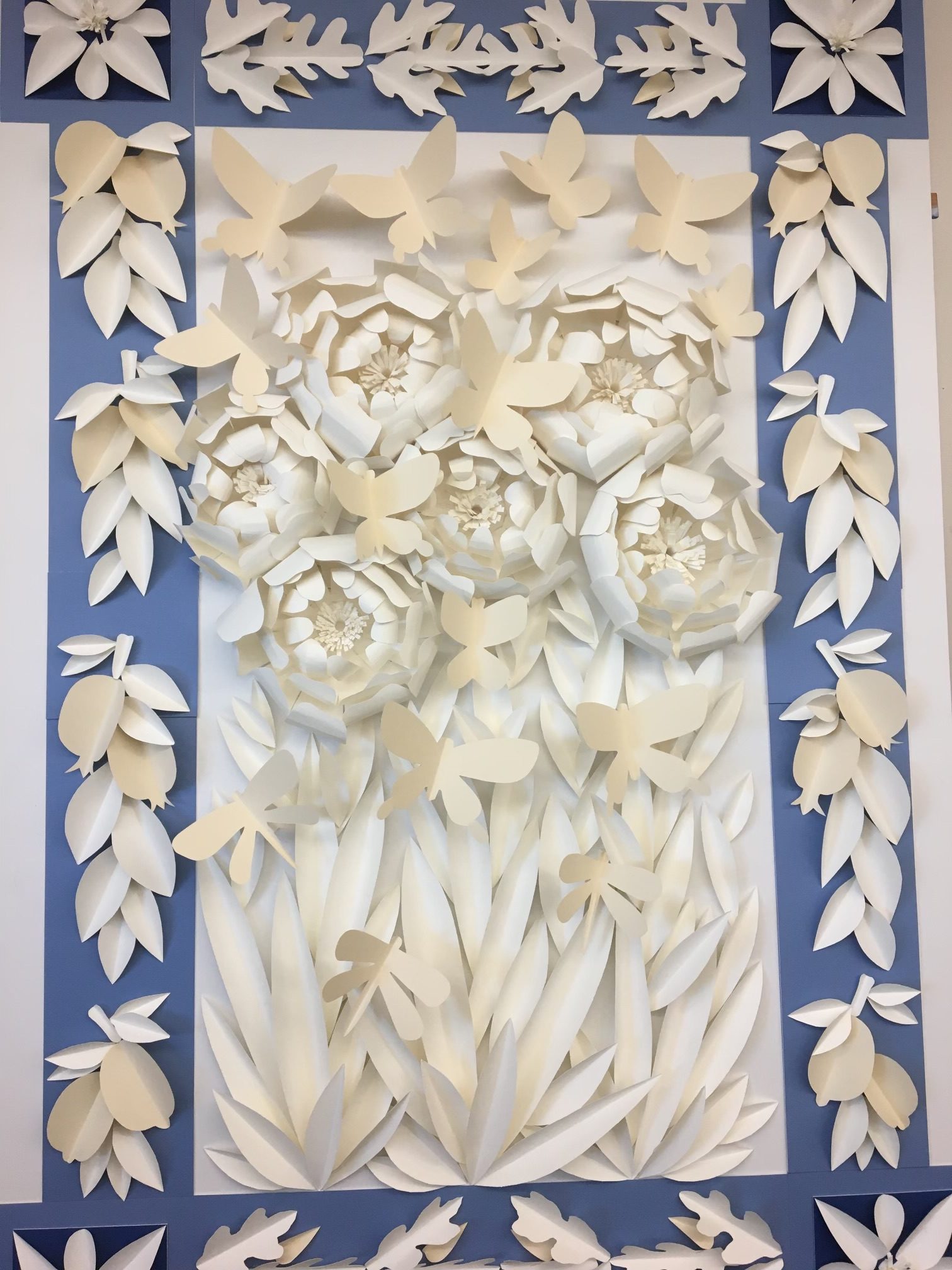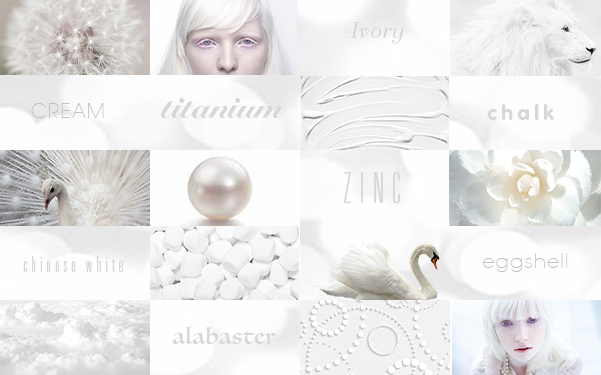


There are differing opinions among color theory purists on whether white should be considered a color at all, since it represents the absence of hue or chroma, and cannot be made from the three primaries (as black theoretically can be). It’s not usually represented on the color wheel, but white is usually an essential ingredient of any palette.
It is the color of fresh snow, chalk, and milk, and is the opposite of black. White objects fully reflect and scatter all the visible wavelengths of light. White on television and computer screens is created by a mixture of red, blue, and green light. (For a more in-depth study of how color works, and whether or not black and white are really colors, visit here.)
For a (non) color, white holds a lot of symbolic power in many cultures as a symbol of goodness and purity. But the way white got that power is a pretty dark tale. Before white became symbolic of wealth and cleanliness, black was one of the most prevalent colors that evoked royalty and power.
White symbolizes purity, joy, and innocence.
The angels in early art were always draped in white.
In Egypt, the pharaoh wore a white crown to verify dominion.
Greeks wore white to cause pleasant dreams.
Ancient Persians believed all gods wore white.
In India, it is the color of the holy men and women.
To the Navaho, white denotes the eastern mountains.
To the Chinese white represents the west and is the symbol for mourning.
In Siam, white elephants are sacred.
A white flag is raised as a token of friendly intentions. or as a symbol of surrender.
Many people consider it bad luck to be married in anything but a white garment.
A Short History of White Pigments
Lime powder and gesso were the first whites available in prehistoric times. The most important contribution to art materials from Greece was lead white, a pigment that would become ubiquitous in Western art. Modern whites are zinc white and titanium white. Thanks to its excellent qualities, titanium white has largely replaced lead white in both art and industry. The perception of white is due to light that stimulates all three types of color-sensitive cone cells in the human eye in nearly equal amounts and with high brightness.
Ironically, the history of white pigments is a dark and morbid one. Lead white was one of the earliest and most reliable whites discovered and has been in use since 400 B.C. Unfortunately, its toxicity sickened and killed scores of people, and for that reason, it is no longer manufactured in the U.S. Lead white’s victims included not only the workers engaged in its manufacture and the artists who used it but also the women who once applied it as a face cream and makeup!
However, there was no easy replacement for lead white and, despite its obvious toxic effects, it continued to be used for centuries. It took the work of many chemists a very long period of time to develop the formulas for zinc white and titanium dioxide white, two colors that would eventually replace the widespread use of lead white. Zinc white was developed for use in oil paints in the late 1700s.
By 1921, a titanium white oil color suitable for artists’ use was introduced by an American manufacturer. Zinc white is more transparent and useful in tinting and glazing work, though prone to cracking over the long term. Titanium white has become the most common replacement for lead white in artists’ pigments because of its lack of toxicity, its thermal and environmental stability, and its opacity.
The titanium pigment, titanium dioxide, now accounts for almost 70% of the total production volume of all pigments worldwide. As artists, we know it as the strong, brilliant white pigment available for oil painting, but that use is just a drop in the bucket compared to the thousands of other commercial and industrial uses it has. It is used extensively to provide opacity and whiteness to plastics, foods and kinds of toothpaste, as well as cosmetics, skincare products, and sunblocks. It is sometimes used to whiten skimmed milk and to mark the white lines on tennis courts. Interestingly, it was also used by NASA to paint the exterior of the Saturn V rocket!
In painting, the addition of white gives us advantages and deficits at the same time. White is needed to lighten dark colors and is used to mix colors to create tints, pastels, or high-value areas in a painting. The trouble with mixing colors with white is that white also cools a color. This may result in the necessity of adding additional warm colors to color schemes to bring the resulting mixture back to the proper temperature.
All in all, we consider this a very small drawback of the reliable, more stable and safer substitute we now have for the beloved but cruel lead white of old.
Colorful Phrases About White
White Christmas, snow-white, white elephant, dead white, whitewash, white-collar, white lies, white lightning, white as a ghost, white knight, lily-white, white magic, pearly whites, white wedding, white knuckle.
An Interesting Anecdote: Mondrian’s Love Affair with White
Piet Mondrian fell in love with white. Mondrian’s most famous paintings are made up of pure red, yellow, black, white, and blue. Over time his artwork became simpler and white became progressively more important. Wider fields of color dominated his paintings, separated by large sections of pure white, as in the Composition with Red, Blue, and Yellow. Mondrian’s fascination with white was described by Charmion von Wiegand: “Everything was spotless white, like a laboratory. In a light smock, with his clean-shaven face, taciturn, wearing his heavy glasses, Mondrian seemed more a scientist or priest than an artist. The only relief to all the white was large mat boards, rectangles in yellow, red, and blue, hung in asymmetric arrangements on all the walls. Peering at me through his glasses, he noticed my glance and said: “I’ve arranged these to make it more cheerful.” Art conservators are not entirely sure what pigments Mondrian used in his paintings. His artwork has undergone in-depth scientific analysis in the hopes of discovering the chemical compositions of the pigment used, which is essential knowledge for conservation purposes.
